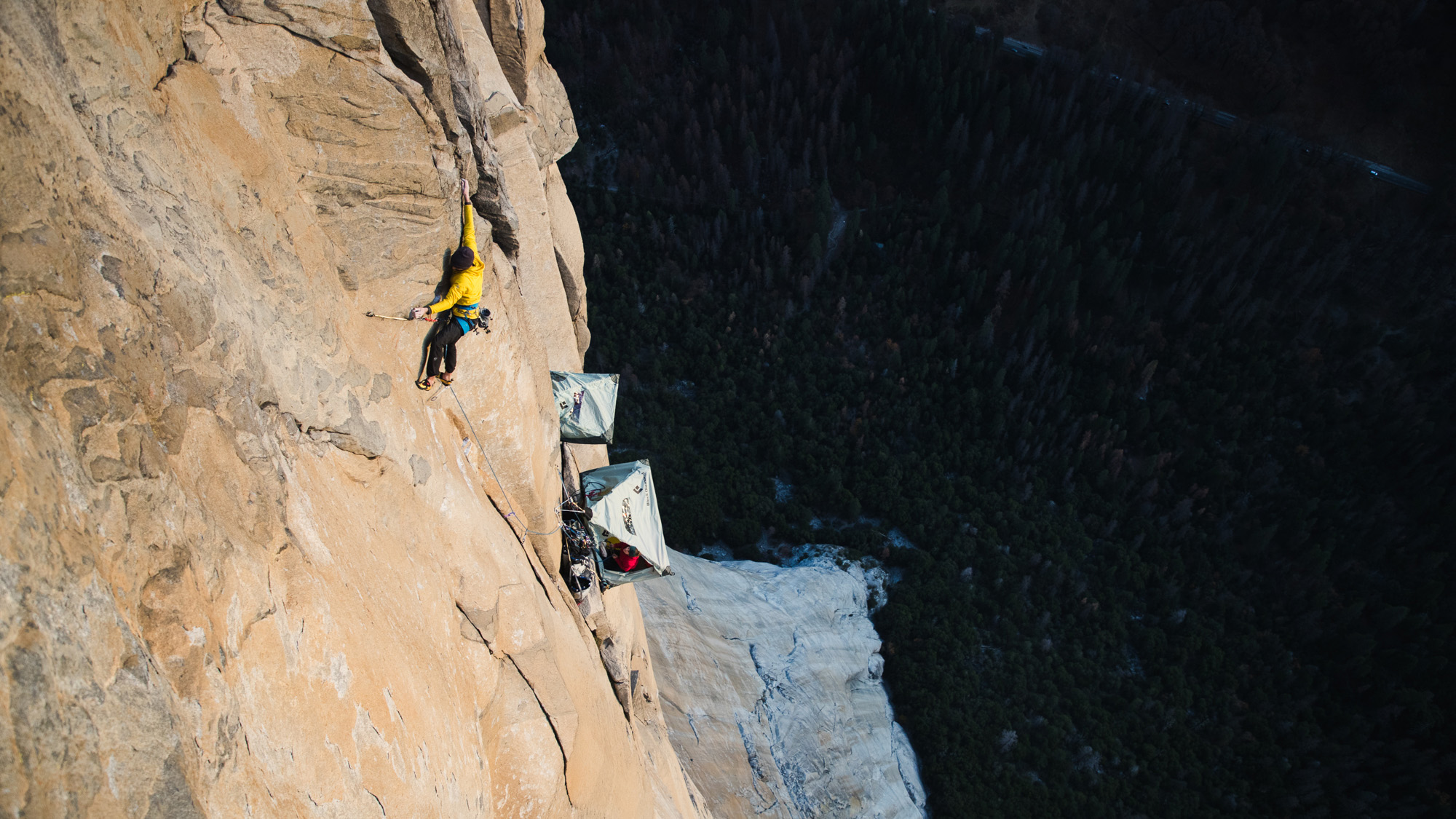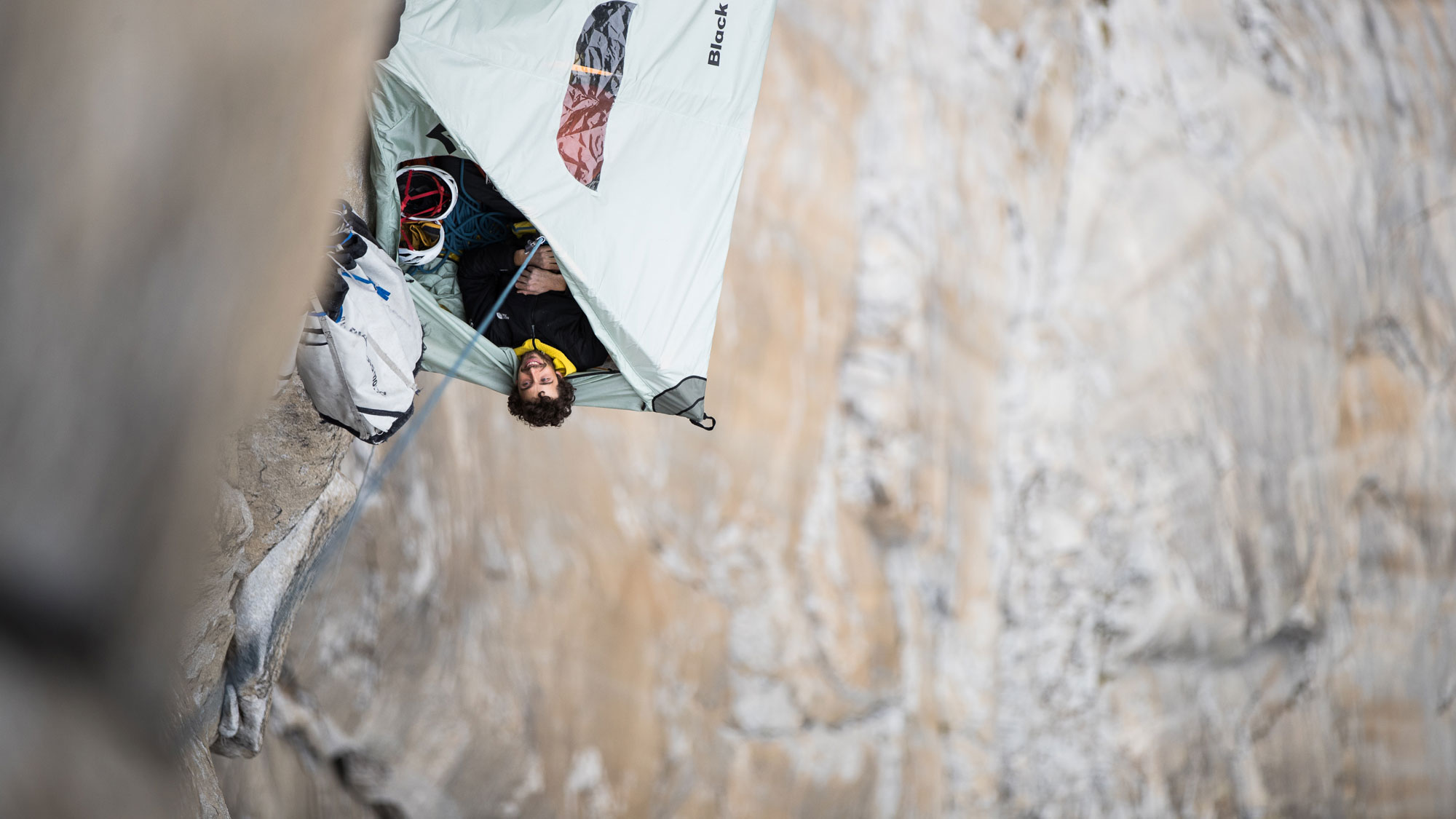Cookie settings
This site uses cookies, small text files downloaded to your device when you browse the website.
To learn more, read our privacy policy.
Do you accept the use of cookies?

The line of “Magic Mushroom” is impressive: the last 400 metres of the route follow a system of extremely smooth corners which at first sight seem impossible to climb; to overcome them you need a good dose of agility and “physical creativity”.
United States
Bigwall
Magic Mushroom
El Capitan
900m
5.14a
Tommy Caldwell e Justen Sjong (2008)
-


I had never invested so much energy on a route prior to that moment. An intense job of introspection was needed to climb the route.
If after climbing “El Nino” I had the intention of going back to Yosemite once again, the climb of “Zodiac” had made “The Valley” a fixed destination on the calendar. From then on, every year I stay in the park an extra week, and going back home becomes increasingly heavy going. “Zodiac” had made the wish to move the boundaries at “El Cap” and to do so I would have had to find a project on which to invest all of my energies, making it possible for me to return numerous times to attempt it. “Magic Mushroom” could be the right route, it had inspired me for quite a while: information about it on the web was quite scarce, but it was always mentioned as the second hardest route on El Cap, after Dawn Wall. The challenge could have proved to be out of my league, but curiosity pushed me further. However, since Babsi (Barbara Zangerl ed) aimed to climb “The Nose”, the symbolic route on this wall, which also fascinated me, we promised ourselves to choose our objective locally, keeping in mind that usually “The Nose” is very busy (it counts 600-700 attempts, aid climbing, per season).
Just like every year, in October, the park is packed full with tourists and climbers. On El Camp you can see dozens of roped parties and “The Nose” was the most crowded: one day we counted sixteen roped parties. It was unthinkable to climb it free, so to my great satisfaction we fell back on “Magic Mushroom”. Usually the route is repeated maximum twice or three times (aid climbing) per season, and when we arrived it was clear. As for “Zodiac” we would have climbed it from the ground up without inspecting the route from above, staying on the face for more days and putting up fixed ropes to work on each single pitch.
The free version of the route shares the first five pitches with “Muir Wall”, a route which is often repeated and which we climbed easily, even if the heat forced us to climb at night time. The real complication came at the point in which the line of the free version joined up with the original, aid, line: grass and dirt filled the cracks, making them impossible to use. It took us ages to clean them: sometimes we would spend entire days brushing them, without even putting our climbing shoes on; and on the next pitches the situation did not improve. The second section, instead, which was a lot more overhanging, instead, was cleaner; the cracks, almost non existent, had left space to a series of impressive and smooth corners: 400 metres with pitches graded between 8a and 8b, which required a lot of creativity to be climbed. Most of the times you had to push on holds which were inexistent for feet and hands, and which were possible to find only by rubbing your hand along the rock face in search of some coarseness, a bit like braille reading.
To decipher the exact sequences entire days were needed, worried in the mean time by the fact that a few routes were only protected by copperheads and others with beaks, but we made it nevertheless, reaching the top.
Before tackling our one and only attempt from the ground, we mechanized a few of the movements better by abseiling down, making the most of the chance and leaving some gear on the wall. Once again we would have climbed during the night and rested during the day. The objective of the first day was to reach the large ledge, straight after the first ten pitches (three of which were already above 8a), where we would have slept. Many were wet and the sun was hot, but we respected the plan. On the second day we reached the nineteenth pitch, where we had left the portaledge; from there we were aware that we would have slowed down remarkably because the crux pitches were about to start. The conditions helped us out, the weather was incredibly dry and stable, and on the eleventh day we found ourselves on top of “Magic Mushroom”. Babsi and I lead all the pitches from 7c upwards, alternating leads on the easier pitches. It was the first time that we spent so much energy on a project, and if the dream became reality it was also thanks to an intense work of introspection. This route proved, once again, how much perseverance, team work and determination can make the impossible possible.










